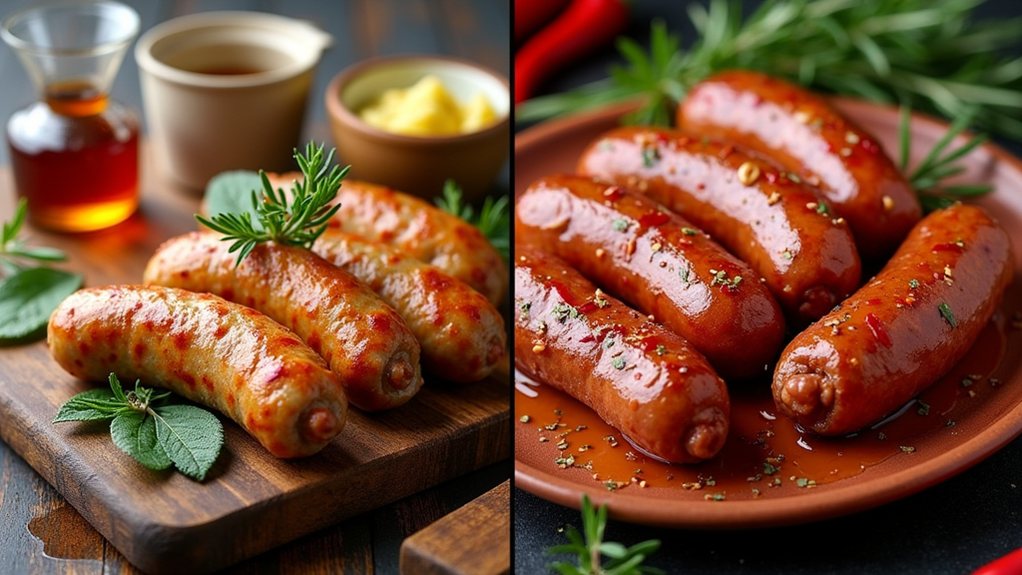Many home cooks mistakenly swap breakfast sausage for Italian varieties, unaware of how this simple substitution can transform a dish’s entire profile. The differences extend beyond mere seasonings, affecting texture, cooking methods, and ultimately, the dining experience. While both contain pork, their distinct flavor foundations create culinary boundaries that, when crossed, often lead to unexpected results. What makes these seemingly similar meat products so fundamentally different, and why does it matter on your plate?
The Distinctive World of Sausage Varieties

When was the last time you considered the distinct characteristics that separate breakfast sausage from Italian sausage? These two popular meat products may seem interchangeable at a glance, but their differences extend far beyond mere mealtime associations, influencing everything from cooking times to flavor profiles.
The flavor distinction stands as perhaps the most pronounced difference between these sausage varieties. Italian sausage delivers bold, robust flavors dominated by fennel and anise, creating that unmistakable Mediterranean profile that comes in sweet, hot, or mild variations.
The unmistakable fennel and anise in Italian sausage creates a bold Mediterranean profile unavailable in its milder breakfast counterpart.
Breakfast sausage, by contrast, offers a gentler flavor experience with sage and thyme taking center stage, sometimes incorporating a hint of sweetness that its Italian counterpart rarely features.
Both sausages typically contain pork as their primary meat, though Italian versions occasionally include beef or lamb for added complexity. When substituting breakfast sausage in Italian dishes, you’ll likely need to add additional herbs and spices to achieve a comparable flavor profile. Breakfast sausage, increasingly health-conscious in modern preparations, often appears in leaner turkey or chicken versions, and even plant-based alternatives have entered the market. For texture variation, consider adding smoky flavors using ingredients like chipotles or smoked paprika similar to those found in al pastor recipes.
The textural differences are notable as well, with breakfast sausage generally presenting a finer, more uniform consistency than its Italian cousin.
Physical characteristics further differentiate these sausage styles. Italian sausages typically come in substantial 6-inch links with natural casings, while breakfast varieties appear as smaller 3-inch links or flat patties, perfect for quick morning meal preparation.
This size difference affects cooking times, with Italian sausages requiring longer heat exposure due to their greater thickness. Just like with USDA Prime beef, the quality of meat used in either sausage variety significantly impacts the final taste and texture.
Their culinary applications reflect distinct cultural traditions. Italian sausage stars in pasta sauces, pizzas, and hearty soups, embodying centuries of Italian culinary heritage.
Breakfast sausage, deeply embedded in American food culture, pairs perfectly with eggs, pancakes, and biscuits, rarely venturing beyond morning mealtimes. Regardless of which type you prefer, food safety experts recommend cooking both varieties to an internal temperature of 160°F to ensure they’re safe for consumption.
Both can be pan-fried or baked, though Italian sausage especially thrives on the grill, acquiring characteristic char marks that improve its flavor profile.
Understanding these distinctions allows home cooks to make informed choices, ensuring that each sausage variety delivers its intended culinary experience.






